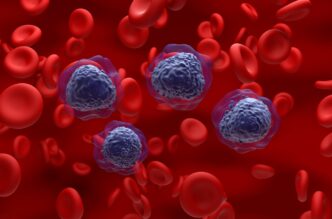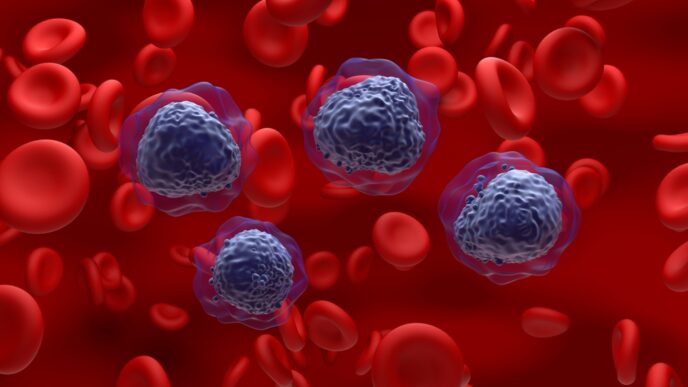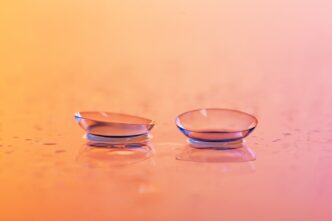Breast cancer surgery can feel intimidating, but it is often far less daunting than it seems. A breast and reconstructive surgeon breaks down what to expect, from the procedure itself to recovery, offering clarity and reassurance for anyone facing this treatment.
WORDS LIM TECK CHOON
 FEATURED EXPERT FEATURED EXPERTDR NG CHAR HONG Consultant Breast and Reconstructive Surgeon Hospital Picaso |
WHY BREAST SURGERY IS A KEY COMPONENT OF BREAST CANCER TREATMENT
“Most breast cancer cases, except stage 4 ones, often require surgery at some stage,” explains Dr Ng Char Hong.
- Stage 4 breast cancers, or the most advanced ones with a strong likelihood of having spread to other parts of the body, are excluded because research has shown that surgery does not make much difference to these patients’ survival chances.
The purpose of breast surgery is to remove the tumour from the body.
- Surgery can be offered upfront – which is to say, it is performed before other treatment options – or after the patient has undergone other treatments first.
Before or After Treatment?
Dr Ng points out that there is no simple answer — it depends on what the healthcare team wants to achieve in a particular case.
- For example, if the tumour is considered large in comparison to the size of the breast, neoadjuvant treatment may be given before surgery to shrink the size of the tumour before it is operated on.
- In other cases, such as in someone with HER2+ breast cancer, chemotherapy may be offered first to determine the patient’s response to the treatment. If the patient responds well, then the outcome from the surgery will most likely be better as well.
Ultimately, the decision to perform the surgery before or after treatment depends on the type of cancer, the stage of the cancer, the tumour size, and many other factors.
The healthcare team will explore all available treatment options with the patient before any decision is agreed upon.
| Join consultant clinical oncologist Dr Tho Lye Mun as he discusses HER2+ breast cancer in more detail. |
TYPES OF BREAST SURGERY
Removal of the Entire Breast
A mastectomy is a surgery that removes the entire breast.
Simple mastectomy
- Removes only the breast tissue, nipple, areola and most of the overlying skin.
- This is an option offered to patients whose cancer has not spread beyond the breast.
Modified radical mastectomy
- Removes the entire breast, including the nipple, areola, the overlying skin, the lining over the chest muscles and some of the lymph nodes under the arm.
- Examination of the lymph nodes will show whether the cancer cells have spread into the lymphatic system and to other parts of the body.
Dr Ng explains that mastectomy is often offered when:
- The patient’s tumour is very big when compared to the size of the breast. However, these days there are options to shrink a tumour first.
- There are many lumps in the breast and removing all these lumps individually may destabilize the integrity of the breast.
- There is extensive formation of tiny calcium crystals (microcalcification) in the breast tissue.
- The patient cannot undergo radiotherapy for various reasons or has already received the maximum dose in previous radiotherapy sessions.
Dr Ng adds that, provided that the nipple is not affected by cancer cells and there are no other complicating factors, it can sometimes be spared from having to be removed during surgery.
Removal of the Tumour and Only Some of the Breast Tissue
Sometimes – usually early-stage breast cancers (stages 1 and 2), although there are also other factors that need to be considered as well – only the tumour and some surrounding breast tissue need to be removed.
- This involves a procedure called breast-conserving surgery (BCS).
- BCS allows the patient to retain as much breast tissue as possible.
- The most common procedure is partial mastectomy.
Partial mastectomy
- Also known as lumpectomy.
- Removes only the part of the breast affected by cancer, instead of the whole breast.
- The goal is to take out the tumor with a margin of healthy tissue while preserving as much of the breast as possible.
- Often, it’s followed by radiotherapy to reduce the chance of the cancer coming back.
Mastectomy or BCS?The decision is made on a case-by-case basis. Dr Ng explains that the choice of surgery usually depends on:
|
After the surgery, the healthcare team may advise the patient to receive radiotherapy and/or chemotherapy to further eliminate cancer cells that may still be present in the body.
Sometimes, follow-up surgery may be necessary.
SHRINKING THE TUMOUR FIRST BEFORE A SURGERY
- Neoadjuvant therapy is a type of therapy offered before a surgery, for breast cancer it is to shrink the size of a tumour.
- The smaller the tumour, the better the chances of having to forgo a mastectomy in favour of a lumpectomy instead.
- Chemotherapy has long been a mainstay of such therapy.
- A marker, usually made of stainless steel material, will be inserted into the tumour to pinpoint its location.
- Targeted therapy can be used alongside chemotherapy in neoadjuvant treatments.
- Dr Ng shares that the healthcare team will be monitoring the tumour closely for shrinkage.
RADIOTHERAPY AFTER A SURGERY
Radiotherapy is a recommended follow-up to the removal of a breast lump or lumpectomy, as it reduces the risk of local recurrence by three times, says Dr Ng.
In the past, the patient will have to come back to the hospital several times for radiotherapy sessions.
Dr Ng shares that these days, intraoperative radiotherapy (IORT) gives the patient a single high dose of radiation at the tumour site during the lumpectomy, while the tumour is exposed on the
operation table.
Intraoperative Radiotherapy (IORT)
- IORT replaces the need for radiotherapy after the lumpectomy.
- Studies found that the risk of recurrence after 5 years of using IORT is about the same as that of more conventional post-lumpectomy radiotherapy.
Some possible benefits of IORT are:
- Convenience for the patient, as there is no need to go back and forth to the hospital for follow-up radiotherapy.
- Gives the body more time to heal without subjecting it to follow-up radiotherapy.
- Reduces the exposure of normal breast tissue to radiation.
- Linked to better cosmetic outcome of breast reconstruction efforts.
- Can be applied to patients who cannot tolerate conventional radiotherapy.
RECONSTRUCTING THE BREAST AFTER A SURGERY
Please Note
- This section serves to share the options available if we prefer to either save our breast tissue as much as possible, or if mastectomy is unavoidable, what our options are with regards to breast reconstruction.
- It is never our intention to give the impression that a woman’s breasts are the be all and end all of her femininity. Many breast cancer survivors still feel feminine – some even more than before – even after losing one or both breasts.
- Those of us who experience emotional issues after losing our breast(s) should consider talking to a counsellor to help us overcome these issues.
When Can a Breast Be Repaired or Restored?
There is the option of having breast reconstruction done right after the surgery, before follow-up treatments, or wait until after the follow-up treatments are done.
Dr Ng personally recommends having breast reconstruction performed immediately after surgery, because the result will be more cosmetically pleasing.
There are two options when it comes to breast reconstruction: breast implants and tissues from other parts of the body.
Breast Implants
- These can be silicone and saline implants.
- Implants may have to be placed in both breasts, even if only one breast is surgically removed, to ensure that both breasts look uniform.
Tissue from Other Parts of the Body
- A piece of tissue — called a flap — containing skin, fat, blood vessels, and muscles is
taken from elsewhere in the patient’s body to reconstruct the breast. - Dr Ng shares that the flap is often taken from the back or the tummy.
- The resulting breast is softer and feels more real compared to those with implants.
- However, the recovery process may be longer and there will be scars at areas from where flaps were taken.
| Both impant options have been shown to not increase the rate of recurrence. They also do not obstruct or obscure the detection of new tumours. |
| This article is part of our series on breast cancer. |














